Project Manifesto

The project explores three main topics that represent a global concern within the present times: growing population, climate crisis and food production. Following these concepts, the main intervention is based on designing a city of the future, located in the actual site of Copenhagen’s North Harbor. In the past 10 years, the population in Copenhagen has grown by approximately 100,000 inhabitants, and towards 2050 the city expected to grow by 120,000 more in the region of Denmark. The project, an artificial island, proposes a geometrical strategy of aggregation and accumulation, responsive and adaptive to the future growing population flows. Project Objectives: to secure the harbor against storms, to store 2,6 million tonnes soil surplus, to create a new urban district for a growing urban population.
Pseudo-code and Workflow

Objectives #1
Goal: Optimizing the mass/ base geometry of the island to have the desired value of volume and the orientation of it to maximize the direct sunlight hours throughout the year while maximizing solar radiation for winter and minimizing solar radiation during summer.
Fitness Values (f)
a= Max Direct Sunlight Hours (All year)
b= (Overall volume of island – desired volume) = zero
c =Min Solar Radiation during Summer
d= Max Solar Radiation during Winter
f= + a – ABS(b – 0) – c + d
Parameters: -X, Y, Z values of the top point of the island massing
-Rotation angle of the building mass
Outcome: Building mass with optimal volume and optimal orientation
Grasshopper Script for Building Mass and Orientation Optimization
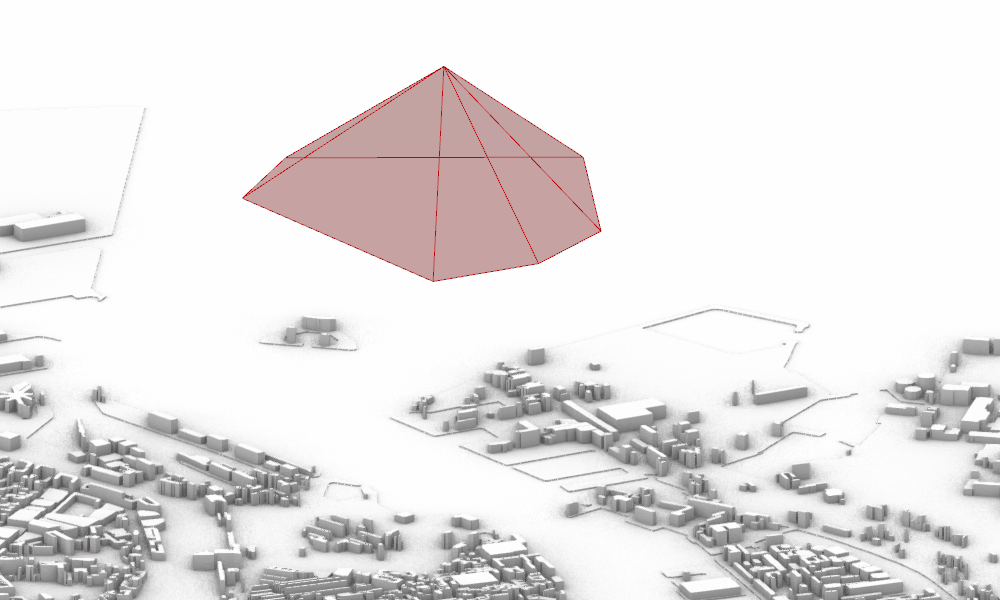
Script – Shortest Circulation

Summer/ Winter Radiation

Catalogue

Objectives #2
Goal: Optimizing the location of the blocks and the circulation paths in between them.
Optimizing the volumes of different modules (mixed, public and production) to a desired number of volume based on the context of Copenhagen.
Fitness Values
a= Min distance between the Centroids of Voxels
b= (Overall volume of individual module – desired volume) = zero
Parameters: -Location of points within the optimized building mass
-Polyline connecting the individual blocks
-X, Y, Z values of the dimension of the blocks
Outcome: voxels with their respective functions located optimally within the building mass with optimized circulation pathways connecting them.
Stimulation
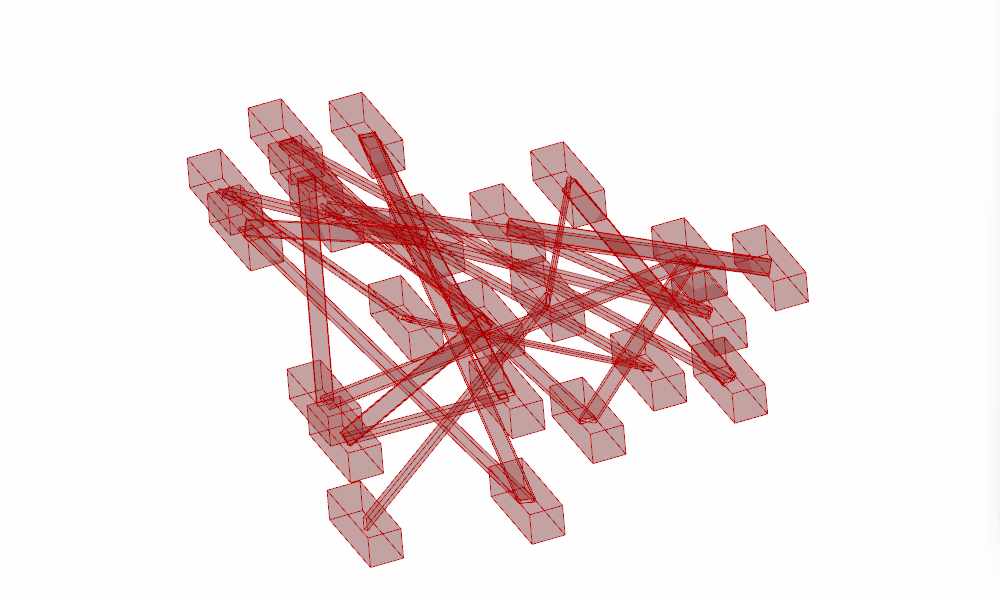

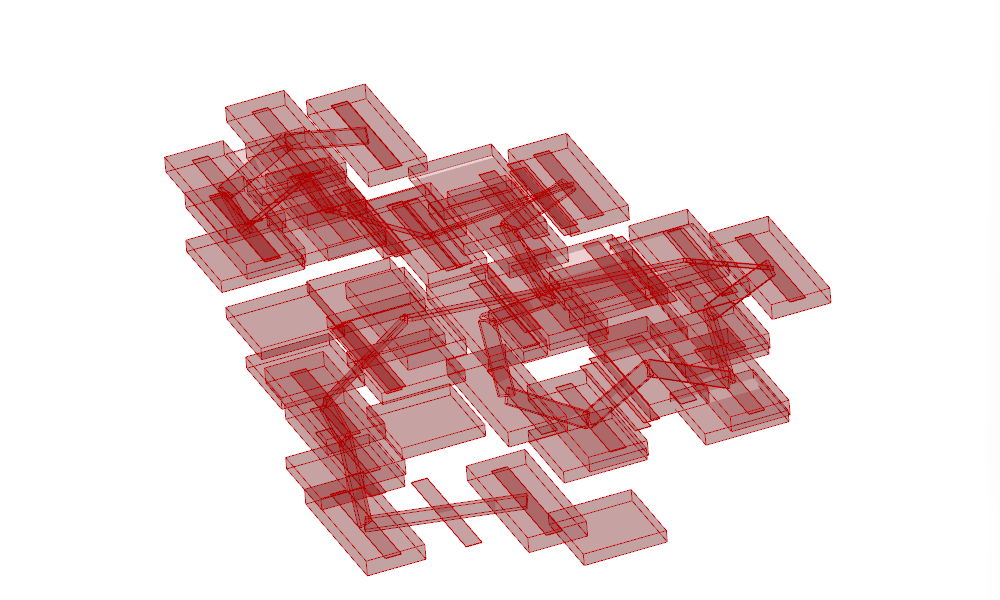
Script – shortest circulation

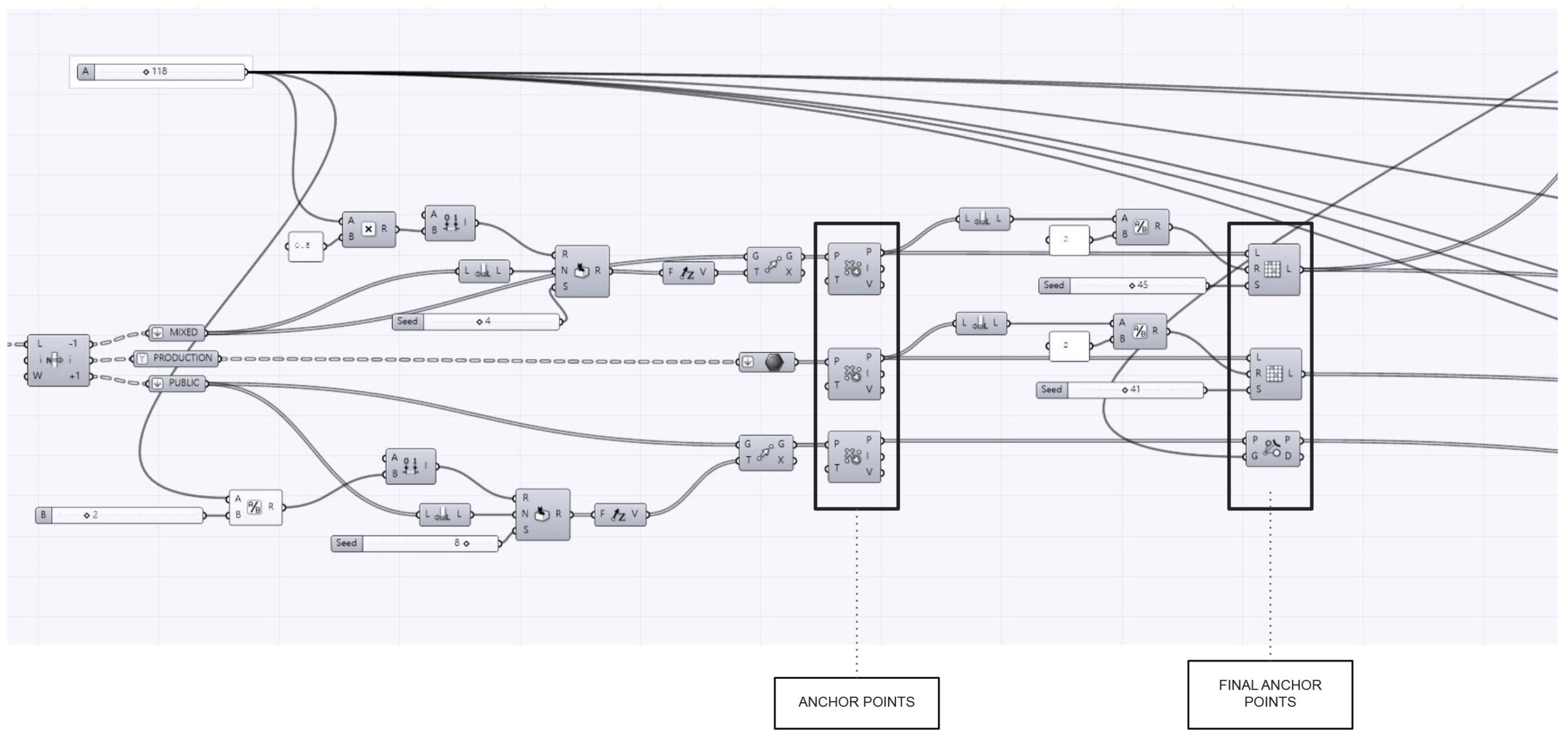
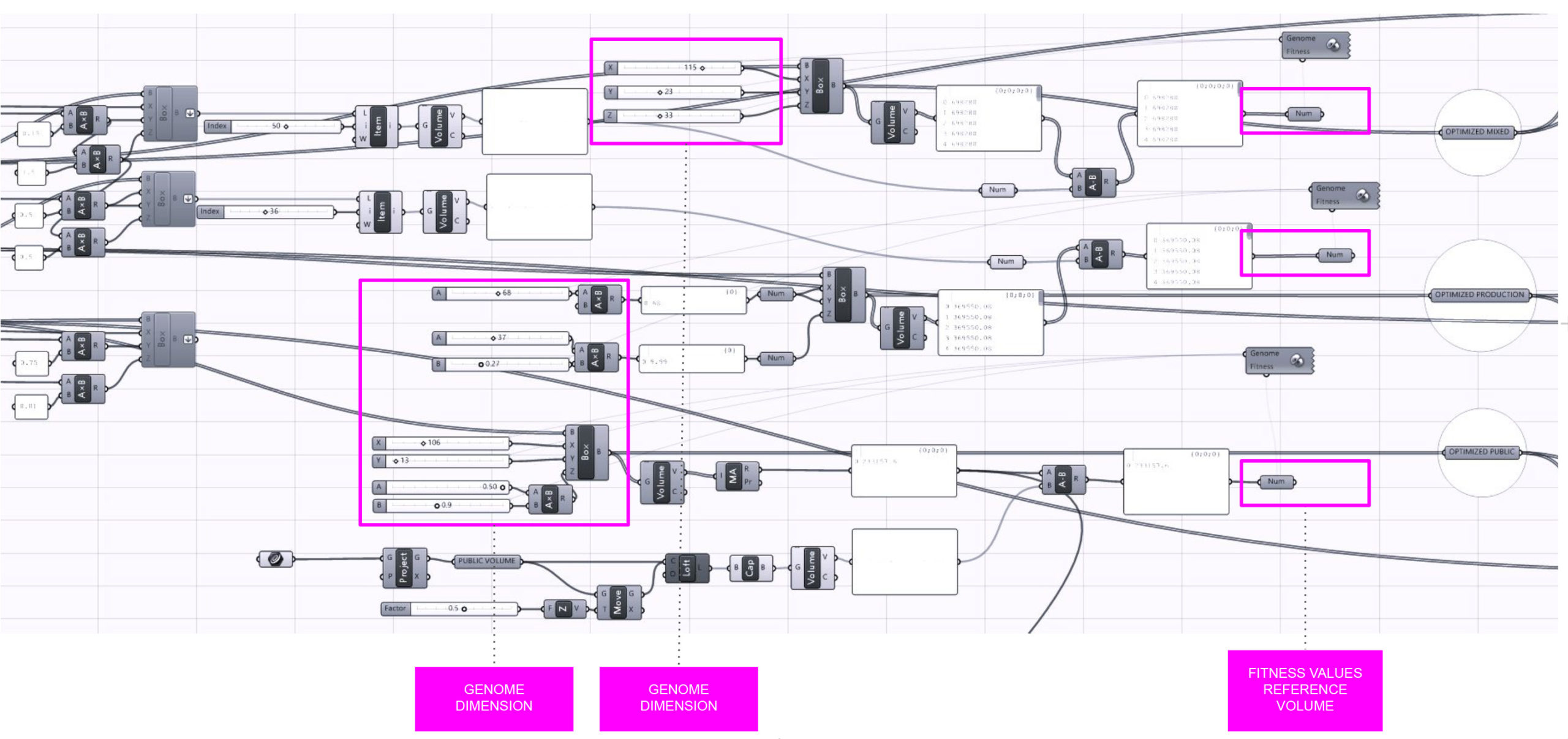
Solar Radiation Analysis



Renders




